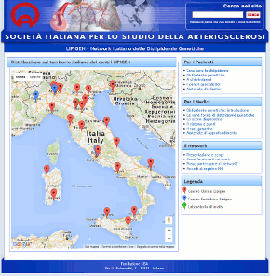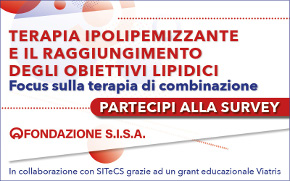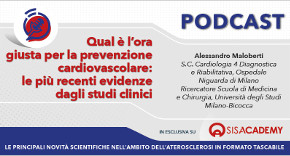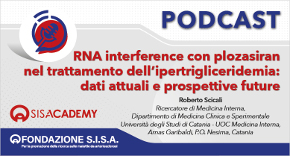 Rivista in lingua italiana
Rivista in lingua italiana
riservata ai Soci SISA
Ultimo numero:
Anno 16 • N.1/2025
SISANews
Rischio cardiovascolare associato all’utilizzo di febuxostat o allopurinolo in pazienti con la gotta
Soggetti con la gotta hanno un rischio di evento cardiovascolare aumentato. In questo studio, pazienti con gotta e patologia cardiovascolare sono stati trattati con due inibitori della xantina ossidasi: febuxostat (inibitore non purinico) oppure con allopurinolo (inibitore a base purinica). In termini di eventi cardiovascolari avversi, Il trattamento con febuxostat o allopurinolo sono risultati paragonabili ma il tasso di mortalità per diverse cause o per eventi cardiovascolari è più alto in soggetti trattati con febuxostat rispetto a quelli con allopurinolo.
![]()
Cardiovascular Safety of Febuxostat or Allopurinol in Patients with Gout
White WB, Saag KG, Becker MA, Borer JS, Gorelick PB, Whelton A, Hunt B, Castillo M, Gunawardhana L, CARES Investigators
N Engl J Med. 2018;378:1200-1210
BACKGROUND: Cardiovascular risk is increased in patients with gout. We compared cardiovascular outcomes associated with febuxostat, a nonpurine xanthine oxidase inhibitor, with those associated with allopurinol, a purine base analogue xanthine oxidase inhibitor, in patients with gout and cardiovascular disease.
METHODS: We conducted a multicenter, double-blind, noninferiority trial involving patients with gout and cardiovascular disease; patients were randomly assigned to receive febuxostat or allopurinol and were stratified according to kidney function. The trial had a prespecified noninferiority margin of 1.3 for the hazard ratio for the primary end point (a composite of cardiovascular death, nonfatal myocardial infarction, nonfatal stroke, or unstable angina with urgent revascularization).
RESULTS: In total, 6190 patients underwent randomization, received febuxostat or allopurinol, and were followed for a median of 32 months (maximum, 85 months). The trial regimen was discontinued in 56.6% of patients, and 45.0% discontinued follow-up. In the modified intention-to-treat analysis, a primary end-point event occurred in 335 patients (10.8%) in the febuxostat group and in 321 patients (10.4%) in the allopurinol group (hazard ratio, 1.03; upper limit of the one-sided 98.5% confidence interval [CI], 1.23; P=0.002 for noninferiority). All-cause and cardiovascular mortality were higher in the febuxostat group than in the allopurinol group (hazard ratio for death from any cause, 1.22 [95% CI, 1.01 to 1.47]; hazard ratio for cardiovascular death, 1.34 [95% CI, 1.03 to 1.73]). The results with regard to the primary end point and all-cause and cardiovascular mortality in the analysis of events that occurred while patients were being treated were similar to the results in the modified intention-to-treat analysis.
CONCLUSIONS: In patients with gout and major cardiovascular coexisting conditions, febuxostat was noninferior to allopurinol with respect to rates of adverse cardiovascular events. All-cause mortality and cardiovascular mortality were higher with febuxostat than with allopurinol.
N Engl J Med. 2018;378:1200-1210

Area Soci
Eventi
39° Congresso Nazionale
 39° Congresso Nazionale
39° Congresso NazionaleRoma, 23-25 novembre 2025
Save the date




 Spring Meeting Gruppi Giovani SID, SIGG, SIIA, SIMI, SIPREC, SISA
Spring Meeting Gruppi Giovani SID, SIGG, SIIA, SIMI, SIPREC, SISARimini, 6-8 aprile 2025
[continua a leggere]
 SISA LIPID ACADEMY - Corso avanzato di lipidologia clinica
SISA LIPID ACADEMY - Corso avanzato di lipidologia clinicaModena, 4-5 Luglio 2024
[continua a leggere]Giornale Italiano Arteriosclerosi
HoFH today
 Rivista Italiana della
Rivista Italiana della
Ipercolesterolemia
Familiare Omozigote
Anno 6 • N.1/2024
Rivista NMCD
Diateca
[continua a leggere]
[continua a leggere]
Newsletter
il vostro indirizzo di posta elettronica
Progetto LIPIGEN

Nuovo sito dedicato al Progetto LIPIGEN
Progetto LIPIGEN - Vecchio portale
E' necessario essere loggati come utente
Lipigen per poter accedere alla pagina
PROject Statin Intolerance SISA
PROSISA – PROject Statin Intolerance SISA
E' necessario essere loggati come utente
PROSISA per poter accedere alla pagina
GILA - Lipoprotein Aferesi
Gruppo Interdisciplinare Lipoprotein Aferesi
(Accesso Gruppo GILA-Lipoprotein Aferesi)
E' necessario essere loggati come utente del Gruppo GILA per poter accedere
Gruppo Interdisciplinare Lipoprotein Aferesi
(Documentazione ad accesso libero)
Pagina informativa per medici e pazienti










